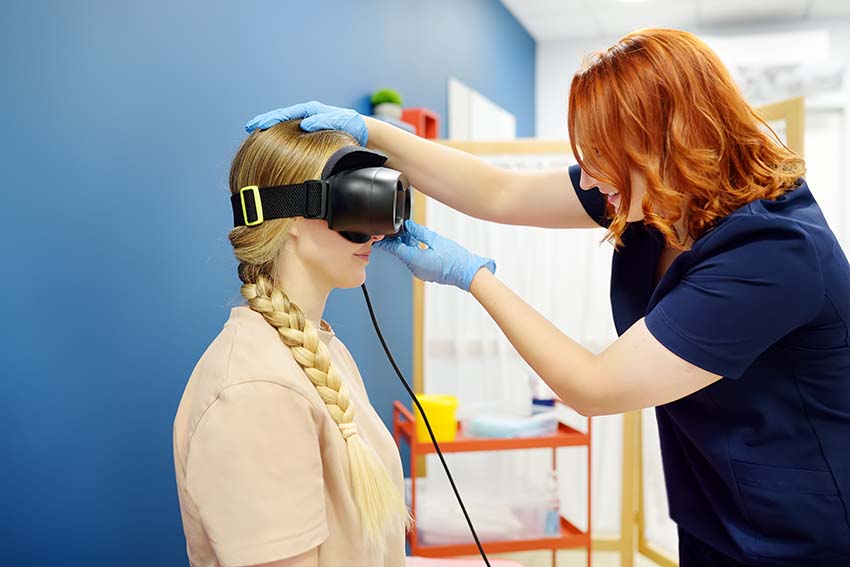Brain Performance
The Visual System: A Window to Neurological Function

Brain performance can be improved through neurological eye movements exercises. Our eyes have often been referred to as the “window to our soul”. Eye movements are the one system which requires activation of the whole entire brain in order to process visual input appropriately so that the world and environment around us is accurately stored in our brain maps. This is the reason why our eyes are a “window” or functional neurology assessment tool that can provide much insight into how our brain is functioning. Eye movements and vestibular activation can be used to rehab and update our brain maps because they fire into all areas of the neuro-axis. These areas also include structures that control seemingly unrelated functions such as cognition, attention, emotions, balance centers, heart rate, coordination, executive functions, memory, and much more.
There are specific brain structures that are responsible for controlling individual qualities of eye movements, such as smooth tracking of an objects, making quick jumps from target A to target B, initiating the intended eye movement, stopping the eyes on an intended target, producing velocity speed signal, and keeping the eyes fixed on a target. These functions and other characteristics of eye movements; like how smooth or jerky the eyes move, whether or not the eyes move together, the symmetry of the pupils and how the pupils react to light, are all reflections of the “strength” and “endurance” of neurons in your brain.
Eye movement measurements and observations help us understand how your brain is performing. The measurements are not only compared to other’s (i.e. normative data) but also how one direction compares to the other. By looking at symmetry of function we can determine what parts of your brain are working well and use those strong pathways to improve the function of neuronal pools that aren’t work so good.
It is important to remember that these various areas of brain that are being tested (e.g. Frontal Cortex, Parietal, Cerebellum) do more than these measured functions. Therefore, other issues or dysfunctions beyond the eye functions themselves may be discovered or correlated with other neurological issues and deficits in brain performance (e.g. attention, learning disabilities, tics, thought processing).
These brain functions (e.g. tracking, visual fixation, quick eye movements) are not only used to help identify brain issues and recover from concussions but are also used to help an athlete increase their level of performance. Most athletes would benefit from an increase visual stability on targets, tracking of targets and quicker eye movements.
The eyes are a great window for early identification of various brain issues including neurobehavioral disabilities (Autism, dyslexia, ADHD) as well concussion/TBI management and increasing the brain’s ability to optimally react and coordinate muscles necessary for enhanced sports performance.
See the video below to learn more about The Visual System from Dr. Carrick.

